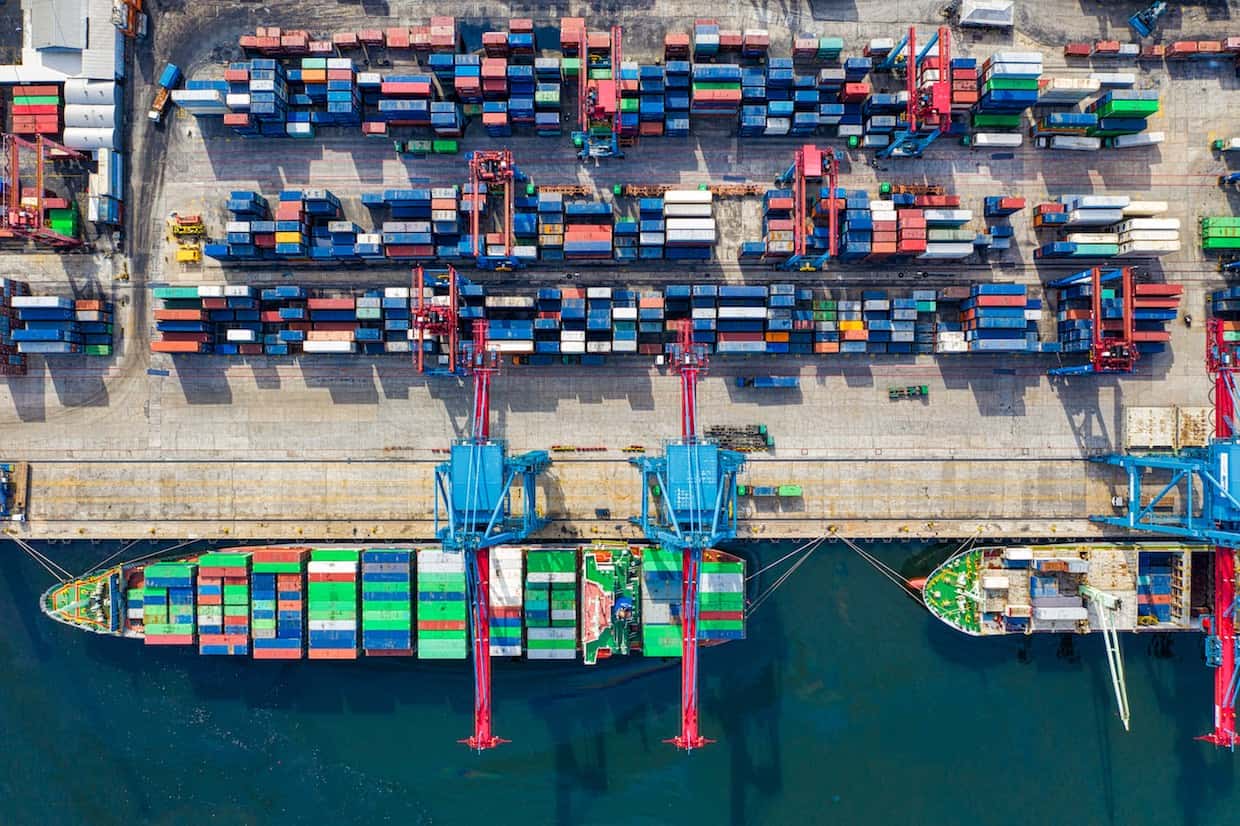7 minute read
Expand Your Borders: 10 Things to Consider When Shipping Internationally
E-commerce is one of the fastest-growing industries in the world. By 2021, there will be more than 2 billion e-commerce shoppers. Is your business set-up to capture your fair share of that booming market?
If you’re only serving customers in the United States, the answer is no.
While the US currently ranks second in e-commerce sales, that still leaves an additional $1.23 trillion of untapped market potential around the world — the largest of which is China, which spends at a record of $740 billion annually. The truth is, If you’re solely focused on domestic sales, you’re essentially ignoring a large corner of the market.
To sell more and maximize your company’s e-commerce potential, you need to sell internationally.
A recent study revealed the following behavior of international shoppers, which begins to exemplify just how much money you’re leaving on the table:
- – 63% of online shoppers in Europe buy products from overseas
- – 55.5% of online shoppers in Africa make purchases from foreign sellers
- – 57.9% of online shoppers in Asia-Pacific buy products from other countries
- – 54.6% of Latin American buyers make purchases from international sellers
Is your business in a position to help meet this growing demand? Developing and listing products is only the start. It’s shipping to foreign countries that can make international e-commerce so difficult. To make sure you’re prepared to fulfill global orders, here are 10 things to consider when shipping internationally.

1. Validate Your International Shipping Addresses
Given the statistics outlined above, huge opportunities and new markets are just waiting for you to capitalize. But make sure you know exactly where you’re shipping before you purchase a label. It’s a waste of money to ship anything that gets returned, but having to double up on international postage can be particularly painful.
Many e-commerce platforms and stores use international address verification services to reduce returns and their associated costs. ShipEngine offers address validation services in the United States, as well as 160-plus countries around the world. When you integrate with ShipEngine, you can virtually eliminate unnecessary returns on international shipments while also taking advantage of other shipping APIs that help you compare international shipping rates, print labels, track shipments, and more.
2. Know Overseas Shipping Restrictions
All countries restrict certain items from crossing their borders. For example, New Zealand has banned certain types of dog collars. Nigeria has banned a host of items, including fruit juice, bagged cement, suitcases and more. If you ship a restricted item, it can get held by customs. In a worst-case scenario, you could face fines or other legal penalties.
Before you start selling your products to a given country, make sure you’re allowed to ship those products there. If you ship without knowing the restrictions, you’ll likely end up wasting your resources.
3. Fill Out the Proper Paperwork to Send International Packages
International shipments often require specific paperwork. In most cases, international shipments will require a commercial invoice that outlines what items are included, their value, the country of origin, the name of the sender, the name of the recipient, etc.
In other cases, countries may require additional information. For example, countries often require additional paperwork when the items shipped are:
- – Expensive or valuable
- – Subject to ITAR (International Traffic and Arms Regulations) guidelines
- – Governed by a country’s trade agreements
Since these requirements are dependent on what and where your e-commerce business is shipping, it’s important to review the requirements on a case-by-case basis. After all, there are nearly 200 countries around the globe, and each has its own policies and regulations on international shipping.
4. Do Research to Avoid Scams
Take the appropriate measures to avoid getting scammed. Start by getting multiple quotes if you’re planning to use a freight service. Some freight companies that offer to send your items to foreign countries are actually flimsy operations that struggle to take care of your products, and that rarely get your shipments to their destinations in the agreed timeframe. Here are a couple ways to detect a possible scam:
-
-
- Double check the URL. It’s a common practice for scam freight forwarding companies to mimic the more reputable brands. Check to make sure their website is hosted on their own domain, and is spelled correctly.
- Carefully review the content on their website. Scammers will sometimes clone blogs, web copy and videos from other businesses (accidentally leaving reference to those companies). And, in the instance they use original content, it is often full of grammatical errors. Sometimes you can even determine a clone just by looking at the quality of the logo on the homepage.
-
It’s also important to create workflows and processes that prevent your recipients from scamming you. E-commerce businesses can often fall victim to elaborate scams created by overseas buyers. Even Amazon fell victim to a recent scam when a 22-year-old made returns with carefully weighed boxes full of sand. He kept the actual items and resold them for a total of $370,000.
5. Balance Shipping Time & Cost Based on Product Type
One of the biggest deterrents for businesses expanding to the international market is cost. It’s understandably more expensive than shipping domestically. The key is to find the right balance between the amount of time it takes for your shipment to arrive to its destination, the cost of the mode of shipping, and the type of product you plan on mailing.
It might help to ask yourself the following questions:
-
- – Is my product lightweight enough to ship affordably by air to international destinations?
-
- – What provides a better competitive advantage: Shipping faster at higher prices, or shipping slower at lower prices?
- – Is my product durable enough to survive a longer, less expensive trip by sea?
Only you can determine the right international shipping solution for your products and their buyers. Look for the least expensive option that still meets your customers’ unique needs and upholds your brand’s promise.
6. Follow Packaging Rules Closely
As if you didn’t have enough to worry about, you also will need to revisit your packaging to make sure its in compliance. All countries have varying rules and regulations on how you can (and cannot) ship packages within their borders. To avoid packaging issues, follow this three-step process:
-
- – Read up on a country’s specific regulations before shipping there
-
- – Follow each regulation to the smallest detail
-
-
- – Triple-check that you have the correct shipping label before mailing
-
Why is the label so important? Many countries require that shipping labels provide specific information. For example, to ship to India, your label must include the name of what’s in the package, the month and year of its manufacturing, the maximum retail sales price, among other details. You read that correctly; all of that information needs to exist on the exterior label in order to be successfully delivered.
7. Consider International Shipping Insurance
Shipping internationally always comes with increased risk. Packages go on longer journeys, make more stops, and pass multiple checkpoints and inspections before reaching their destinations. Adding insurance is one of the fastest and easiest solutions to mitigate this risk
Of course, the amount of insurance you should take out depends on the value of what you’re shipping. Just make sure you view insurance as an investment rather than an expense in the right circumstances. You may save more money over time by paying for insurance than by replacing the shipments that come up lost, stolen, damaged, rejected, or returned.
8. Find Trustworthy Suppliers
If you ship internationally, you may or may not be dealing with international suppliers, too. Working with suppliers in other countries can be challenging. Foreign suppliers may be difficult to communicate with (whether due to the language barrier, time zones, or cultural differences), and they could bring an alternative way of doing business or values that don’t align with your own.
Before choosing a supplier, spend a disproportionate amount of time researching and vetting them. If you choose the wrong business, it will be much harder to run your business and successfully serve customers overseas.
9. Understand the Cost of Duties and Other Taxes
Foreign governments add additional taxes and duties to foreign shipments. This is often done in an effort to protect domestic businesses from foreign competition, but sometimes is utilized simply to boost government revenues. Either way, it is your responsibility to ensure that proper duties and taxes are paid prior to your overseas shipment reaching customs.
The more complex part of this process is knowing when duties do not apply to your international shipment. In many cases, a taxing threshold divides shipments that require duties and those that do not. If your shipment fails to reach the specified dollar threshold—which varies by country—it can enter the country without any additional payment. The key is understanding how your package will be treated when it first arrives in its destination country. For example, all parcels sent to France worth €20 or more are subject to a 3% duty and a 20% value-added tax, or VAT. In the United States, however, the threshold is set at $800, making it a lot more affordable for international ecommerce companies to break into the US marketplace.
10. Understand Exchange Rates
Something you have to know when expanding to the international market is that there could be high exchange rates for foreign currencies. For example, when you sell internationally using Amazon’s marketplace in Canada, or Amazon Europe and Amazon UK, you need to shop for the best exchange rates to convert the revenue back to your currency at home.
Ready to Master International Shipping?
If you’re looking for low-hanging fruit to pick from this list, look no further than #1: validating addresses. ShipEngine’s RESTful API allows users to integrate and validate addresses around the world, ensuring fewer unnecessary returns and eliminating the costs associated with return labels.
Getting started with our address validation services is fast and easy. Sign up for a free API key to start exploring what ShipEngine can do for your business.










